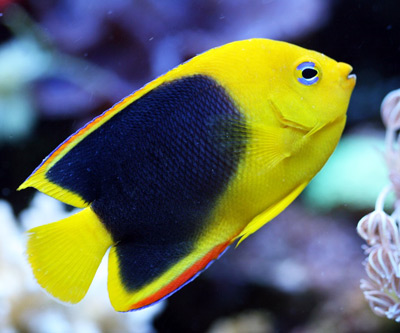
Rock Beauty Angelfish (Holacanthus tricolor)
On one of my earliest dives down in the Florida Keys back in the 1990s, a gorgeous yellow and black angelfish caught my attention as I drifted over a section of reef. In my mind’s eye, I envision the angel hovering boldly above a large barrel sponge, but I can’t be sure whether that’s actually how it happened or just an idyllic memory. In any case, I was taken with its distinctive appearance and wondered whether it might make a good aquarium candidate. As anyone familiar with the fauna of the tropical western Atlantic has already guessed, the angel I saw back then was a rock beauty (Holacanthus tricolor)—a species that, unfortunately, tends to fare poorly in marine aquaria and is generally best left to advanced fishkeepers or, better yet, in the ocean where it can beguile other divers. I’ll get into why in just a moment.
Physical traits: H. tricolor is laterally compressed (flattened from side to side) and, in typical angel fashion, sports a sharp, backward curving spine on the gill cover (operculum). As alluded above, this species is yellow on the anterior portion of the body and on the caudal fin and black from behind the gills to the caudal peduncle (base of the tail). The margin of the anal fin, the edge of the operculum, and the opercular spine are orange. MORE









I have one amd it eats everything, but it took a couple of weeks to get there. You Ned to be an experienced aquarist amd the fish needs live rock and algae to survive on until,it switches over to aquarium foods. I fees it formula two,mysis,new spectrum, mussel ,fish eggs and baby spinach torn in little pieces. It will eat any flake food but I limit that. It is bossy so beware!